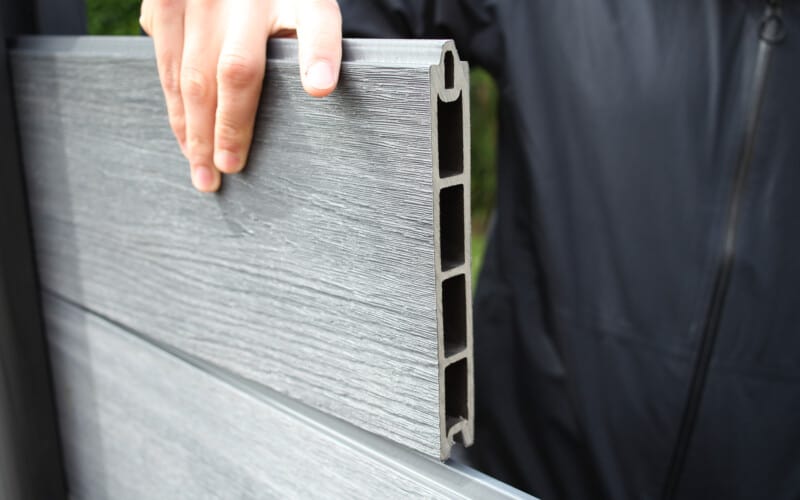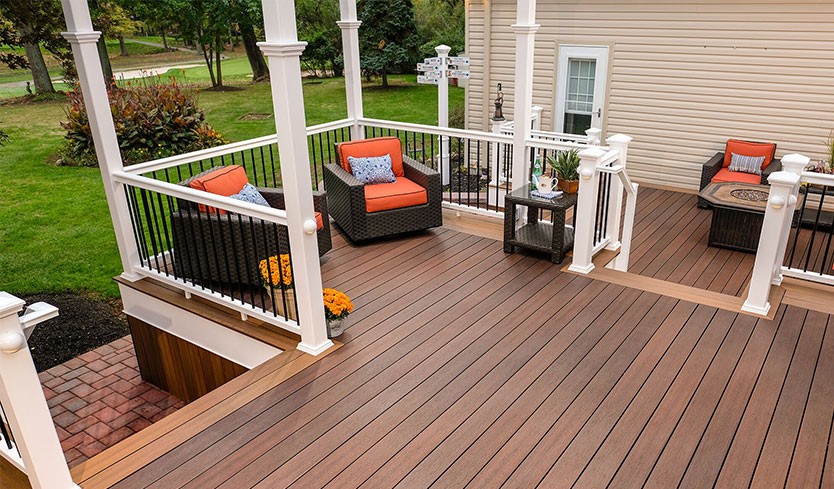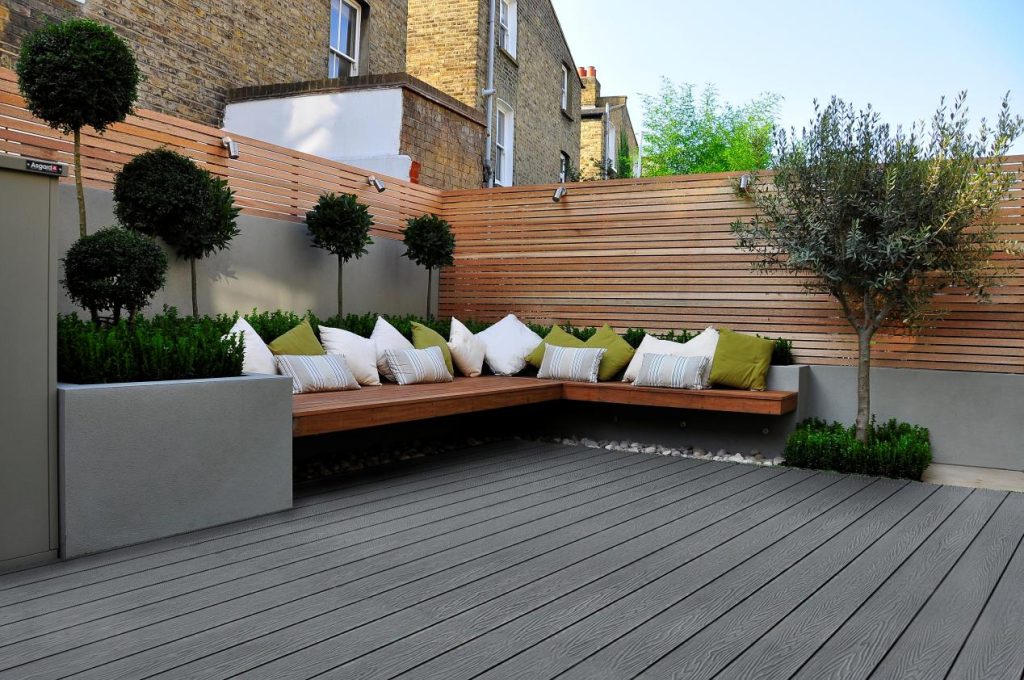If you are working with modern outdoor projects, homeowners and contractors alike are constantly looking for materials that offer durability, low maintenance, and aesthetic appeal. One solution that has grown in popularity over the past decade is tongue and groove composite fence boards. Combining the timeless beauty of natural wood with the resilience of high-quality composite materials, these boards provide a versatile solution for fencing, gates, and even decking applications.
Table of Contents
In this article, we will explore everything you need to know about tongue and groove composite fence boards, including their design, benefits, installation tips, and various applications. Whether you are planning a backyard fence, a garden gate, or a composite decking project, this guide will provide you with all the information you need to make an informed choice.
What Are Tongue and Groove Composite Fence Boards?
composite materials that mimic the appearance of natural wood. The boards feature a tongue on one edge and a corresponding groove on the other. This design allows the boards to interlock snugly when installed, creating a seamless and visually appealing surface.
Unlike traditional wooden fence boards, composite T&G boards are made from a mixture of wood fibers and recycled plastic, creating a material that resists rot, warping, and insect damage. This combination gives homeowners the natural look of wood without the ongoing maintenance headaches associated with timber fencing.
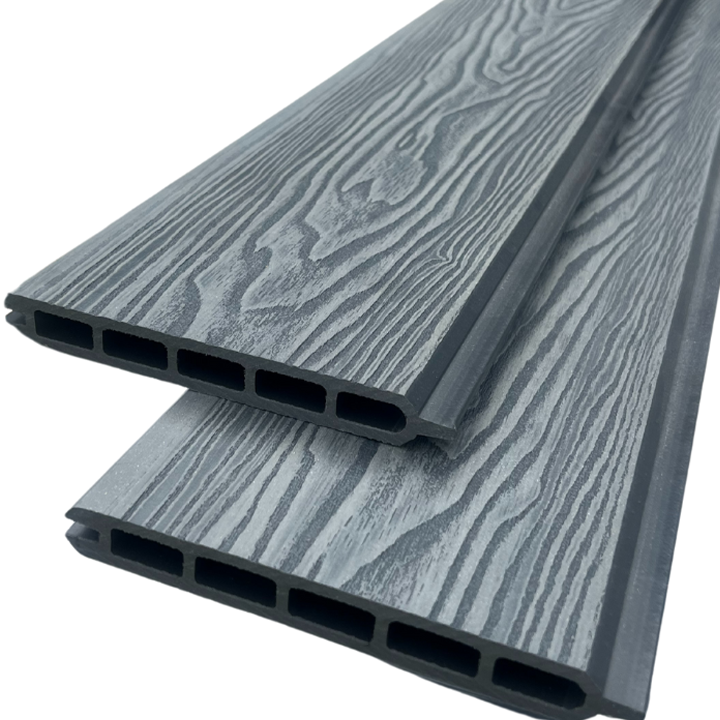
Key Features of Tongue and Groove Composite Fence Boards
Interlocking Design
The tongue and groove design ensures a tight fit between boards, preventing gaps and providing superior privacy. This makes them ideal for fencing and gates where security and aesthetics are priorities.Durable Composite Material
The combination of wood fibers and plastic resin results in a material that is highly durable, weather-resistant, and long-lasting. It withstands extreme temperatures, UV exposure, and moisture without cracking or splintering.Low Maintenance
Unlike traditional wood, composite boards do not require regular staining, sealing, or painting. Occasional cleaning with soap and water is usually sufficient to maintain their appearance.Consistent Appearance
Each board is manufactured to exact specifications, meaning you won’t encounter the inconsistencies often found in natural wood, such as knots, warping, or uneven edges.Eco-Friendly Construction
Many tongue and groove composite fence boards are made from recycled materials, making them an environmentally responsible choice for sustainable landscaping projects.
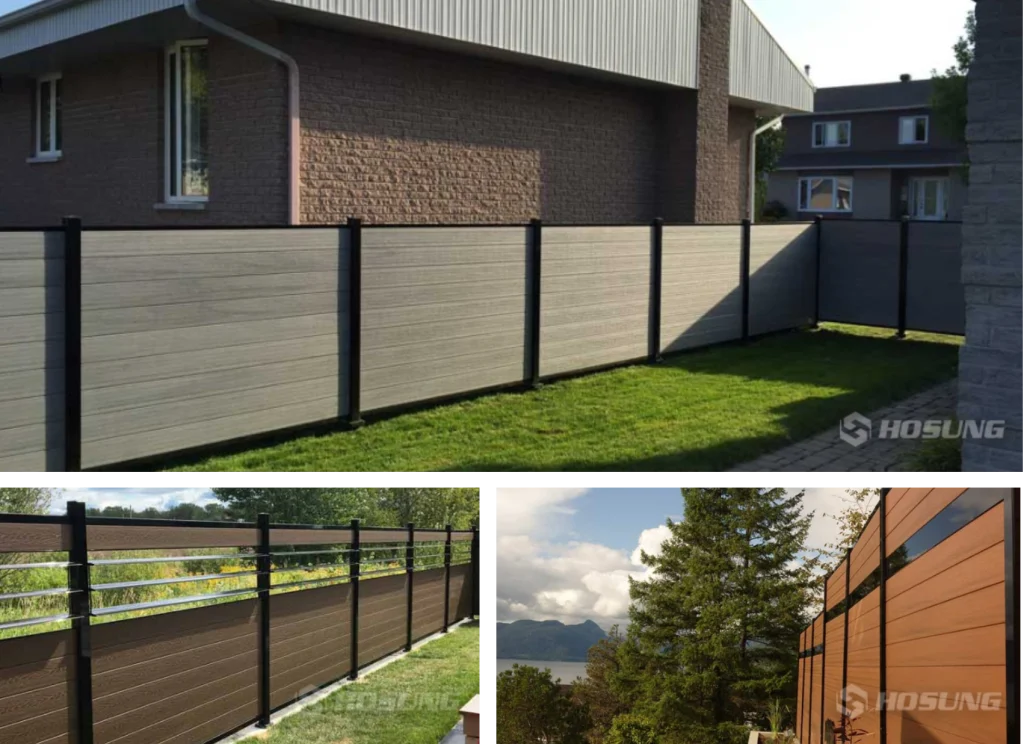
Advantages of Tongue and Groove Composite Fence Boards
Tongue and groove composite fence boards offer numerous benefits that make them a superior alternative to traditional wooden fencing:
1. Longevity
Composite materials are designed to last for decades without significant deterioration. Unlike wood, they will not rot, warp, or split over time, even when exposed to rain, snow, or intense sunlight.
2. Enhanced Privacy and Security
The interlocking T&G design eliminates gaps between boards, ensuring complete privacy and reducing the risk of intrusions. This makes them a popular choice for residential fences and garden enclosures.
3. Resistance to Pests and Decay
Wooden fences are vulnerable to termites, carpenter ants, and fungal decay. Composite boards, however, are naturally resistant to these threats due to their plastic content.
4. Minimal Maintenance
With no need for painting, staining, or sealing, tongue and groove composite fence boards save homeowners time, effort, and money. Cleaning is as simple as hosing off dirt and debris.
5. Attractive Aesthetic Options
Composite fence boards are available in a variety of colors, finishes, and textures. Many mimic the natural grain of wood, providing an elegant and sophisticated look without the imperfections of real timber.
6. Versatility
These boards are not limited to fencing. They can also be used for gates, privacy screens, garden walls, and even decking. Their uniform size and interlocking design make them adaptable for numerous outdoor projects.
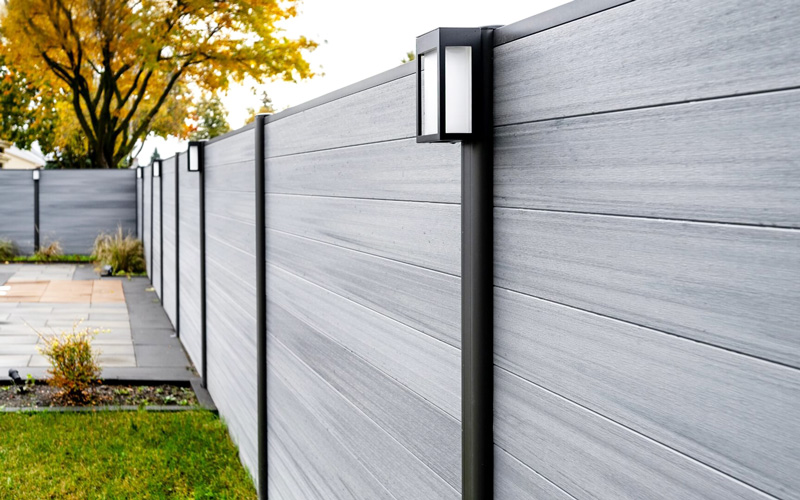
Applications of Tongue and Groove Composite Fence Boards
1. Residential Fencing
The most common use of tongue and groove composite fence boards is for residential fencing. Their durability, privacy, and low-maintenance properties make them ideal for homeowners who want a beautiful and long-lasting boundary fence. They work well in urban settings, suburban backyards, and even rural properties where harsh weather is a concern.
2. Garden and Yard Gates
Composite T&G boards are perfect for gate construction. The tongue and groove design ensures that the gate is sturdy, secure, and resistant to sagging. Unlike wooden gates, composite gates maintain their shape over time and do not require frequent adjustments or repairs.
3. Privacy Screens
In addition to traditional fences, tongue and groove composite boards can be used to create privacy screens around patios, decks, and outdoor seating areas. Their interlocking design ensures complete coverage, allowing homeowners to enjoy a secluded outdoor space without compromising on style.
4. Decking and Outdoor Flooring
Though primarily designed for fences and gates, many composite T&G boards can also be used for decking applications. Their uniform thickness and weather-resistant properties make them an excellent option for patios, terraces, and poolside decks.
5. Commercial and Public Spaces
Tongue and groove composite fence boards are increasingly being used in commercial and public spaces such as parks, schools, and office complexes. Their long lifespan, minimal maintenance, and attractive finish make them ideal for high-traffic areas.

Choosing the Right Tongue and Groove Composite Fence Boards
Selecting the ideal T&G composite boards depends on several factors, including your project requirements, aesthetic preferences, and budget.
1. Board Size and Thickness
Composite fence boards come in various lengths and thicknesses. For standard fencing, 6 to 8 feet in height and 1 to 2 inches in thickness is typical. Thicker boards may be necessary for gates or structures that require additional strength.
2. Color and Finish
T&G composite boards are available in a wide range of colors, from natural wood tones to modern greys and whites. Consider the overall style of your outdoor space when selecting a finish. Some boards also feature a textured grain that replicates the look of natural wood.
3. Material Composition
Look for boards with a high-quality composite mix that ensures durability and resistance to weathering. Premium boards often contain UV stabilizers and additional protective layers to prevent fading over time.
4. Installation Method
The tongue and groove system allows for straightforward installation, but you should ensure that your fence posts and supporting framework are level and properly secured. Some manufacturers offer pre-finished panels or installation kits to simplify the process.
Installation Tips for Tongue and Groove Composite Fence Boards
While composite T&G boards are designed for easy installation, proper techniques will ensure long-term performance.
1. Preparing the Site
Clear the area of debris, rocks, and vegetation. Ensure that the ground is level and that fence posts are correctly aligned. Post depth and spacing will depend on the height and length of your fence.
2. Securing Posts
Use treated wood, metal, or composite posts for the best results. Posts should be anchored firmly in concrete for stability, particularly for tall fences or gates.
3. Board Placement
Start at one end and insert the tongue of each board into the groove of the adjacent board. Make sure boards are aligned vertically and horizontally. Use hidden fasteners or screws designed for composite materials to prevent splitting or damage.
4. Expansion Gaps
Composite materials expand and contract slightly with temperature changes. Follow the manufacturer’s recommendations for spacing between boards to allow for natural expansion and contraction.
5. Finishing Touches
After installation, inspect your fence or gate for any uneven boards or gaps. Clean the boards to remove dirt or fingerprints, and apply any manufacturer-recommended sealers or UV protectants if needed.
Maintenance of Tongue and Groove Composite Fence Boards
One of the key advantages of T&G composite boards is their low maintenance. Here’s how to keep them looking their best:
Regular Cleaning: Wash boards with a garden hose or soft brush to remove dirt and debris. Mild soap can be used for stubborn stains.
Inspect for Damage: Although composite boards are durable, it’s still important to check for any damage or loose fasteners periodically.
Preventive Measures: Trim nearby plants and trees to prevent excessive moisture or debris accumulation on the boards.
Unlike wooden fences, composite T&G boards do not require annual staining or sealing, saving both time and money.
Common Myths About Tongue and Groove Composite Fence Boards
Myth 1: Composite Boards Look Fake
High-quality T&G composite boards are designed to mimic the appearance and texture of natural wood. Many even feature realistic grain patterns and subtle color variations, making them virtually indistinguishable from timber.
Myth 2: They Are Expensive
While composite boards may have a higher upfront cost than wood, their long lifespan and low maintenance costs often make them more economical over time.
Myth 3: They Are Difficult to Install
Thanks to the tongue and groove interlocking system, installation is generally straightforward. With the right tools and preparation, even DIY enthusiasts can achieve professional results.
Choosing the Right Supplier
Selecting a reputable supplier is critical when purchasing tongue and groove composite fence boards. Look for companies that offer:
High-quality composite materials with UV and moisture resistance
Wide selection of colors, finishes, and sizes
Detailed installation instructions or professional support
Warranty on materials and workmanship
Working with an experienced supplier ensures that your investment will last for decades and that your fence or gate maintains its aesthetic appeal.
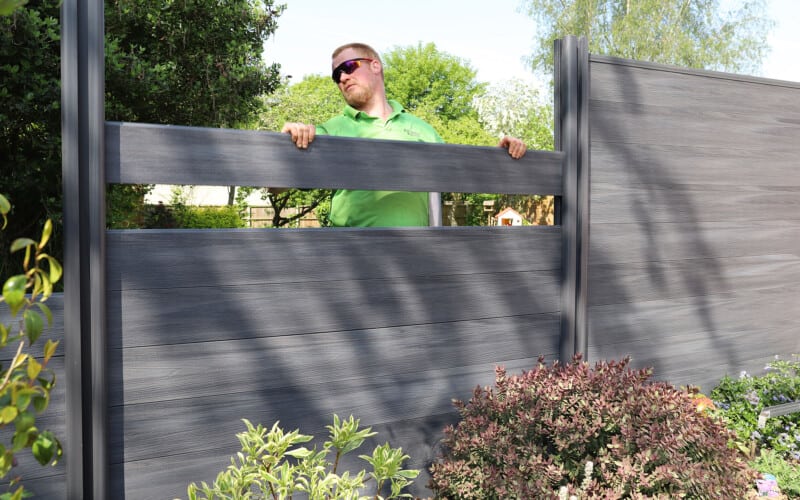
Conclusion
Tongue and groove composite fence boards are a versatile, durable, and attractive solution for modern fencing, gates, and even decking projects. Combining the best qualities of wood and composite materials, these boards offer enhanced privacy, low maintenance, and long-lasting performance.
Whether you are building a residential fence, a stylish garden gate, or a deck area, T&G composite boards provide the strength, stability, and visual appeal that make your outdoor space both functional and beautiful.
Investing in tongue and groove composite fence boards means choosing a material that stands the test of time, withstands harsh weather conditions, and requires minimal upkeep—making it an ideal choice for homeowners, contractors, and designers alike.
Contact Hosung WPC for more about these Tongue and groove composite fence boards!

